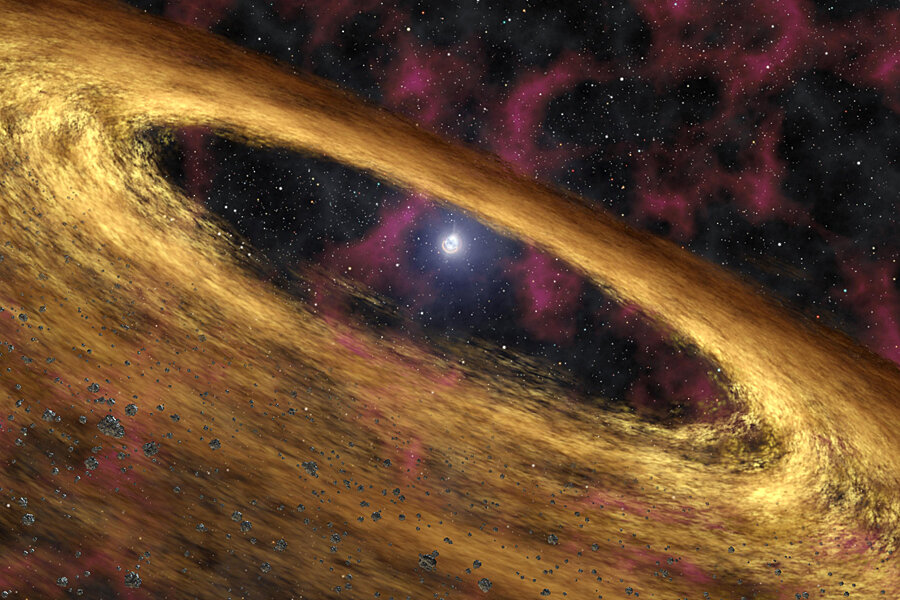Tiny spinning star slammed by billion-ton space rock, say astronomers
Loading...
When you throw a bunch of rock and debris at a rapidly spinning star, what happens? A new study suggests that so-called pulsar stars change their dizzying spin rate as asteroids fall into the gaseous mass. This conclusion comes from observations of one pulsar (PSR J0738-4042) that is being “pounded” with debris from rocks, researchers said.
Lying 37,000 light-years from our planet in the southern constellation Puppis, this supernova remnant’s environment is swarming with rocks, radiation and “winds of particles”. One of those rocks likely was more than a billion metric tonnes in mass, which is nowhere near the mass of Earth (5.9 sextillion tonnes), but is still substantial.
“If a large rocky object can form here, planets could form around any star. That’s exciting,” stated Ryan Shannon, a researcher with the Commonwealth Scientific and Industrial Research Organisation who participated in the study.
Pulsars are sometimes called the clocks of the universe because their spins, fast as they are, precisely emit radio beams with each revolution — a beam that can be seen from Earth if our planet and the star are aligned in the right way. A 2008 study by Shannon and others predicted the spin could be altered by debris falling into the pulsar, which this new research appears to confirm.
“We think the pulsar’s radio beam zaps the asteroid, vaporizing it. But the vaporized particles are electrically charged and they slightly alter the process that creates the pulsar’s beam,” Shannon said.
As stars explode, the researchers further suggest that not only do they leave behind a pulsar star remnant, but they also throw out debris that could then fall back towards the pulsar and create a debris disc. Another pulsar, J0146+61, appears to display this kind of disc. As with other protoplanetary systems, it’s possible the small bits of matter could gradually clump together to form bigger rocks.
You can read the study in Astrophysical Journal Letters or in preprint version on Arxiv. The study was led by Paul Brook, a Ph.D. student co-supervised by the University of Oxford and CSIRO. Observations were performed with the Hartebeesthoek Radio Astronomy Observatory in South Africa, and CSIRO’s Parkes radio telescope.
Source: Commonwealth Scientific and Industrial Research Organisation
Elizabeth Howell is the senior writer at Universe Today. She also works for SPACE.com, Astronomers Without Borders, Space Exploration Network, the NASA Lunar Science Institute, NASA Astrobiology Magazine and LiveScience, among others. Career highlights include watching three shuttle launches, and going on a two-week simulated Mars expedition in rural Utah. You can follow her on Twitter @howellspace or contact her at her website.
This post originally appeared on Universe Today.







